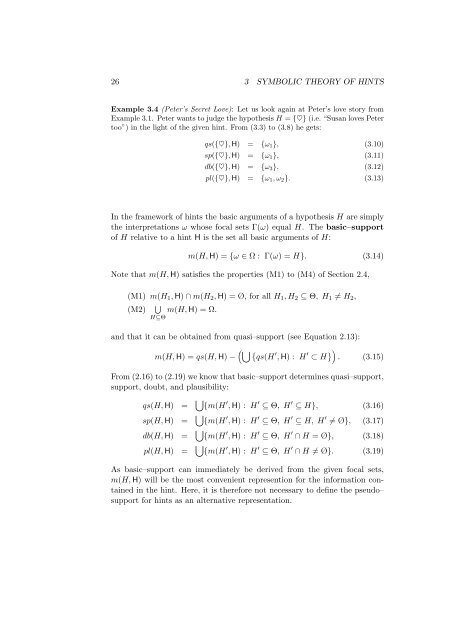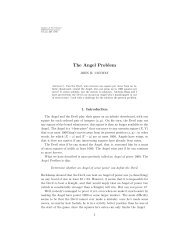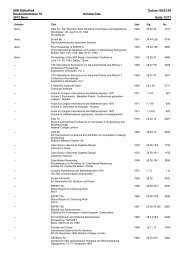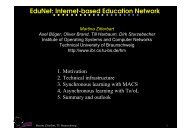Propositional Argumentation Systems and Symbolic Evidence Theory
Propositional Argumentation Systems and Symbolic Evidence Theory
Propositional Argumentation Systems and Symbolic Evidence Theory
Create successful ePaper yourself
Turn your PDF publications into a flip-book with our unique Google optimized e-Paper software.
26 3 SYMBOLIC THEORY OF HINTS<br />
Example 3.4 (Peter’s Secret Love): Let us look again at Peter’s love story from<br />
Example 3.1. Peter wants to judge the hypothesis H = {♥} (i.e. “Susan loves Peter<br />
too”) in the light of the given hint. From (3.3) to (3.8) he gets:<br />
qs({♥}, H) = {ω 1 }, (3.10)<br />
sp({♥}, H) = {ω 1 }, (3.11)<br />
db({♥}, H) = {ω 3 }, (3.12)<br />
pl({♥}, H) = {ω 1 , ω 2 }. (3.13)<br />
In the framework of hints the basic arguments of a hypothesis H are simply<br />
the interpretations ω whose focal sets Γ(ω) equal H. The basic–support<br />
of H relative to a hint H is the set all basic arguments of H:<br />
m(H, H) = {ω ∈ Ω : Γ(ω) = H}. (3.14)<br />
Note that m(H, H) satisfies the properties (M1) to (M4) of Section 2.4,<br />
(M1) m(H 1 , H) ∩ m(H 2 , H) = Ø, for all H 1 , H 2 ⊆ Θ, H 1 ≠ H 2 ,<br />
⋃<br />
(M2) m(H, H) = Ω.<br />
H⊆Θ<br />
<strong>and</strong> that it can be obtained from quasi–support (see Equation 2.13):<br />
m(H, H) = qs(H, H) −<br />
(⋃ { qs(H ′ , H) : H ′ ⊂ H }) . (3.15)<br />
From (2.16) to (2.19) we know that basic–support determines quasi–support,<br />
support, doubt, <strong>and</strong> plausibility:<br />
qs(H, H) = ⋃ {m(H ′ , H) : H ′ ⊆ Θ, H ′ ⊆ H}, (3.16)<br />
sp(H, H) = ⋃ {m(H ′ , H) : H ′ ⊆ Θ, H ′ ⊆ H, H ′ ≠ Ø}, (3.17)<br />
db(H, H) = ⋃ {m(H ′ , H) : H ′ ⊆ Θ, H ′ ∩ H = Ø}, (3.18)<br />
pl(H, H) = ⋃ {m(H ′ , H) : H ′ ⊆ Θ, H ′ ∩ H ≠ Ø}. (3.19)<br />
As basic–support can immediately be derived from the given focal sets,<br />
m(H, H) will be the most convenient represention for the information contained<br />
in the hint. Here, it is therefore not necessary to define the pseudo–<br />
support for hints as an alternative representation.








